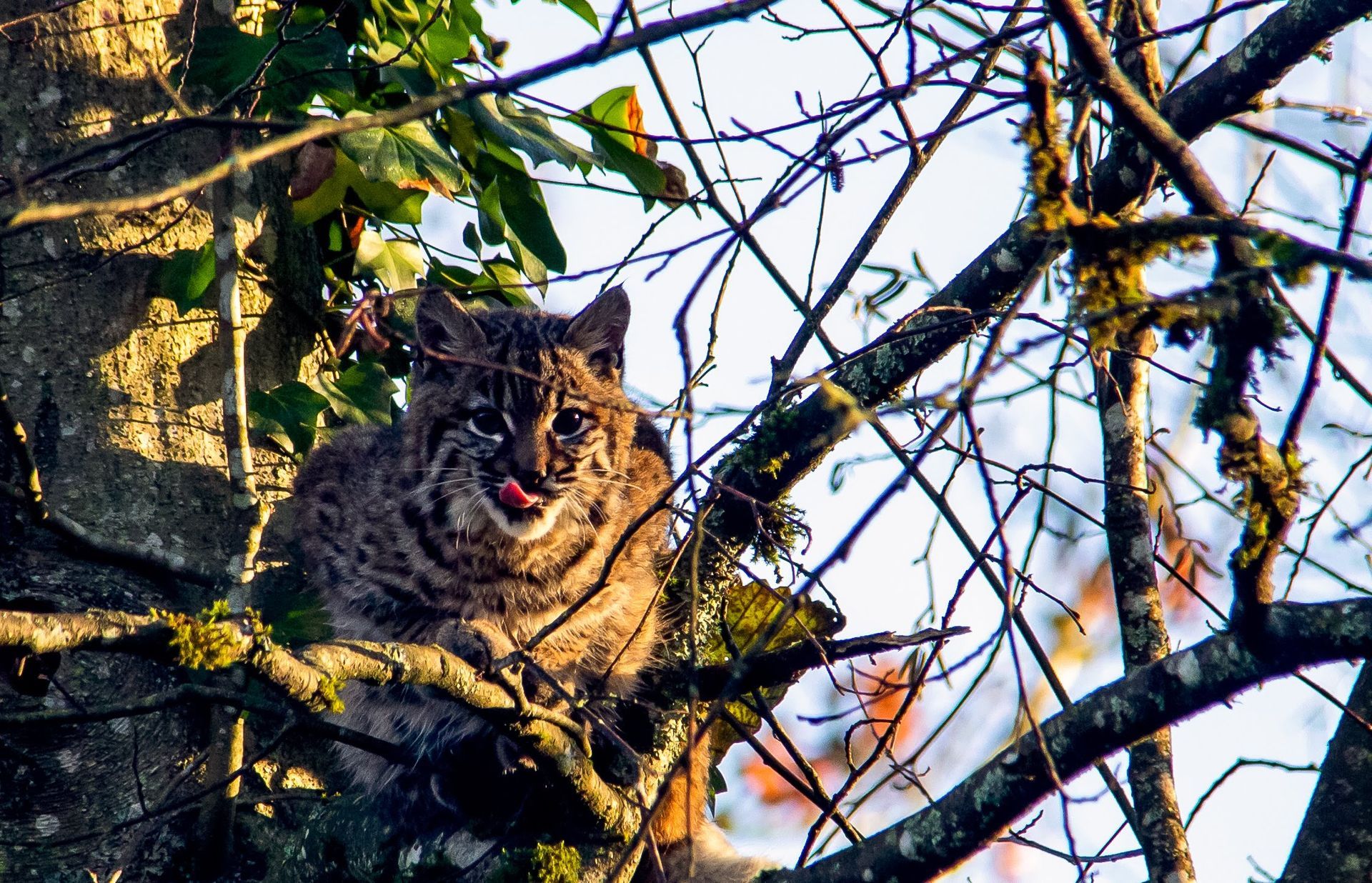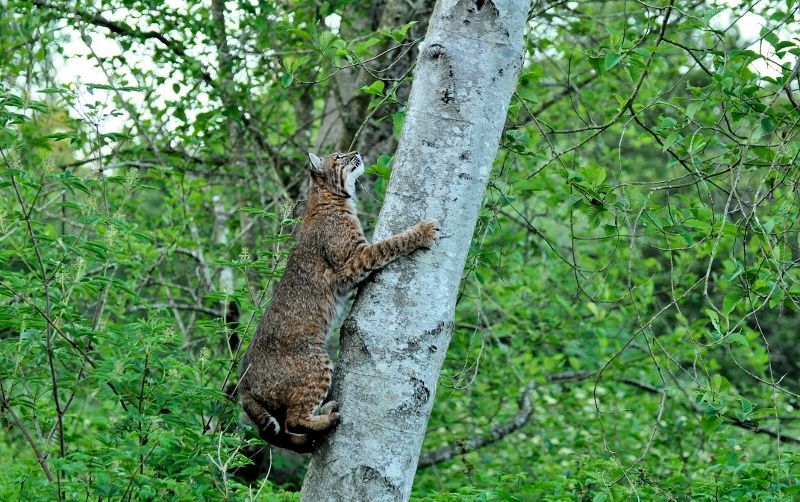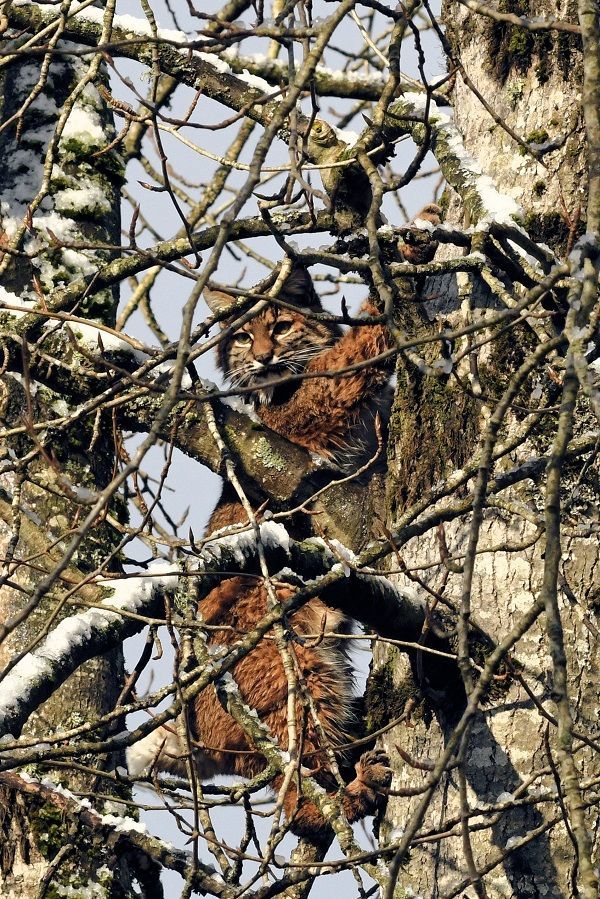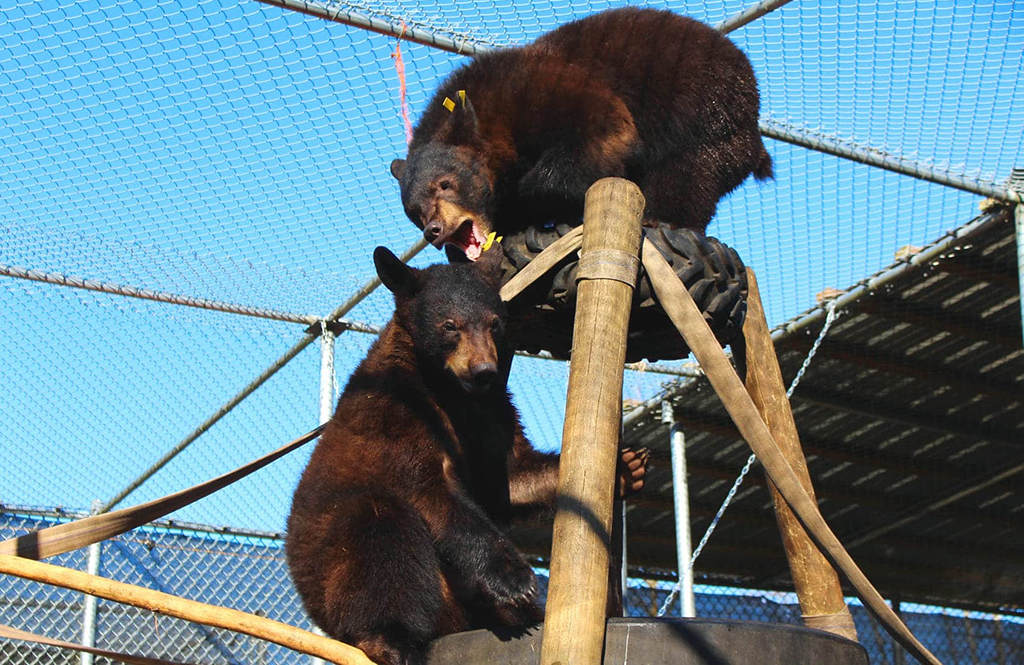Bobcats in The Wild

Photo: Romas Šimonėlis
Bobcats (Lynx Rufus) are found throughout the majority of the U.S., Mexico, and the Southern part of Canada. They can weigh anywhere from 5kg (11lb) to 14kg (30lb) and be 61cm (11in) to 122cm (48in) in length. Bobcats are fast runners, and can reach speeds up to, 48kph (30mph,) they are also excellent climbers and can leap up to 3 Meters (10 feet) in a single bound!
Habitat can consist of scrubland, forests, swamps, even residential areas, it is rare to see them as they are an elusive animal preferring to hide from people. So, if you see one in the wild, consider yourself lucky.
Bobcats are the most common wild feline in North America. Bobcats are generally solitary animals, having individual ranges of varying size. If they find an abundance of prey they will keep to a smaller territory, typical prey being rabbits and hares. Bobcats will, however, will eat almost any mammal, reptile, or bird, and have even been observed capturing roosting bats. With it is not common, Bobcats will sometimes catch and eat fish. For denning sites, Bobcats will use anything from: caves, hollow logs, and rocky ledges.
Kittens typically are born in the spring, though in Southern regions, it is possible for them to have a second litter later in the year.

Photo: Milva DeSiena
Some interesting facts
- Bobcats have keen lowlight vision, being crepuscular hunters, meaning they like to hunt
at Dawn or at Dusk. Though some learn to be active at any time of day.
- Bobcats in the North are often larger they their Southern counterparts.
- They are often mistaken for other wild cats like the Canada lynx or Cougar, sometimes even for domestic cats!
- They are called Bobcats, because of their short tails give them a “bobbed” look.
The tails can be from 11cm (4.3in) to 19cm (7.5in) in length.
- They like to keep more than one den. Bobcats keep a number of dens in their territory
so they can hide their young while hunting, or just have a “cat nap” after a hunt. They will
spray the entrance of their den with urine to keep intruders away.
- Female bobcats can have litters of one to six kittens, younger mothers will usually have
a smaller litter. The kittens will remain in the den for the first two months or so, the mother will start bring her kittens prey at the end of the first month. When the kittens emerge from the den, the mother starts teaching them how to hunt, while still providing them
with food. By 11 months they can hunt on their own, and are forced to leave mum’s territory.

Photo: Milva DeSiena
Some more things to know
- It is extremely unlikely that a bobcat will attack a human.
- If Bobcats are frequenting your yard, you can help avoid any potential conflict by keeping cats indoors, and supervising small dogs when they need to go out.
- Do not feed wildlife.
- Keep garbage and recycling in bear proof containers or containers with tight fitting lids.
- Put garbage and recycling containers out the morning of collection, not before.
- Do not leave pet food outside overnight.
- Remove bird feeds, so bobcats are not attracted to the birds.
- Bobcat kittens are usually born April to June, look for open spaces under decks, sheds, trees and shrubs, or piles of debris. Be sure to close off these places before they den.
Bobcats and Humans can coexist, with some responsible behavior on our part, we can enjoy those rare and wonderful moments that we do get to see them.

Photo: Milva DeSiena
Critter Care Wildlife Society News

Sign up to get inspiring stories of rescue,
rehabilitation and release from Critter Care
Be the first to receive our newsletter, new blog posts, and updates
about our most critical needs and community news.


